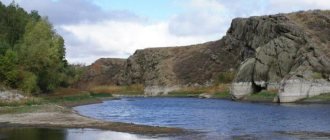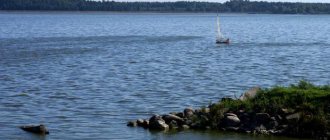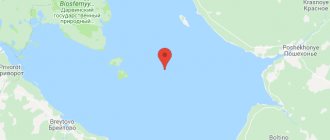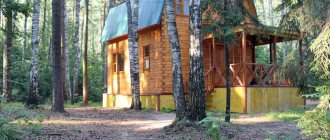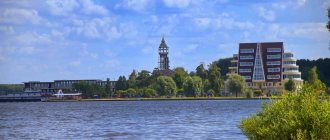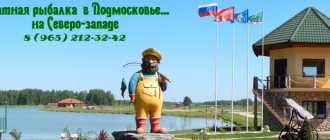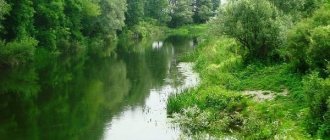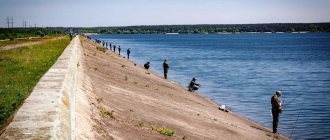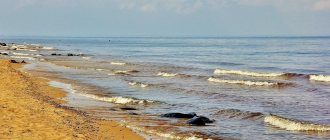The Ozerninskoye Reservoir is considered one of the best and most popular places for fishing. The coastline here stretches for 29 km, so there is enough space for avid hunters. The maximum depth of the lake is 18 meters. The banks are comfortable, flat, and the place itself is clean. There is everything here to do what you love. There are a lot of fish, there are several exotic species that are rarely seen in nature.
Fishermen love to hunt on the Ozerninsky Reservoir, because fish can be caught all year round. There is always a bite, regardless of weather conditions. For convenience, there are several fishing bases located on the shores; there is also plenty of space for beach recreation.
History and geographical features
The Ozerninskoye Reservoir is, as the name suggests, of artificial origin. Its past begins in 1967, when a hydroelectric complex was built on Ozerna. It is located at a distance of 2.6 km from the mouth of the river. There is also an earthen dam with a length of 995 m. It reaches a height of 24 m, and you can drive over it by car.
The reservoir is characterized by a normal retaining level of 182.5 m, a minimum allowable level in winter of 169 m, and a forced retaining level of 183.7 m.
Its total volume is 144, and its useful volume is 140 million cubic meters. m. The width reaches a maximum of 2.5 km, length - 19 km, depth - up to 20.5 m.
The ice begins to break up at the end of November and breaks up in mid-April. Ships don't sail there. In addition to fishing, the practical benefits of the facility include flood control and sanitary watering.
Two bridges were built over the reservoir, which are included in the Moscow Automobile Ring. Among the nearby settlements, only the village of Novovolkovo can be distinguished. In Soviet times, a sanatorium was founded here.
Ozerninsky stocking is carried out regularly. Thanks to this, there is a fairly high concentration of fish here, which makes it attractive to residents of Moscow and the Moscow region. It does not stand out as a large attraction, at least in comparison with other reservoirs in the Moscow region.
The main type of vegetation along the banks is low willow. Reeds and reeds are not found there. The bottom is characterized by a large number of fallen trees and depth changes, which is a consequence of human activity.
In general, the bottom structure of the Ozerninsky reservoir can be described as follows; it is divided into three main zones:
- Coastal. In those days, when the water level along the coastline had not yet risen, willow and bushes flourished here. After filling, the coastal bottom remained quite muddy and littered.
- Average. Previously, this area acted as a river bed, its shape was almost not deformed. The depth reaches 10 m.
- The rapids have also remained here from past times and have changed little. Deepening up to 15 m, no snags.
On the Internet and on our website you can find many photos of Ozerninsky and more systematic information, including reviews of fishermen who visited here.
Natural features
The Ozerninskoe reservoir was filled in 1990 and is considered the youngest in the Moscow region. But this does not negate its popularity among fishermen, since it has a large variety of fish. Compared to similar reservoirs, the Ozerninskoye Reservoir is not particularly large, its length is only 29 kilometers, but the fish composition is regularly updated and maintained.
According to environmentalists' reports, the water in the reservoir is clean, without any impurities or harmful substances. Rusfishing is not very welcoming to the Ozerninskoye Reservoir, as the management company raises many questions about the quality of work.
Summer fishing on Ozerninsky
On the Ozerninskoye Reservoir, fishing is possible all year round. Knowledge of promising points in this case is not so important, because the concentration of fish is so high that not a single fisherman will leave empty-handed. All this is confirmed by the reviews of lovers who have visited here. However, it is not difficult to identify the most promising edges. In summer it is:
- The section around Remyanytsya. Run fishing here will be ineffective, but it’s easy to do a great job with donkeys. Take eel and bream. Closer to the center is a suitable area for spinners.
- You can also consider another place - next to the boat station. Here is the confluence of the Veyna River and the reach. The bottom topography is extremely difficult; pike perch and pike can be caught, as well as quite large perch.
- On the other bank, the point of confluence of the stream, where a deep cauldron has formed, deserves attention. Professional fishermen note that here, with some skill, you can catch pike and carp.
- But the most favorite and most stable place in terms of catch is the bank opposite the boarding house. Here, in the gap between the snags, pike, perch, and pike perch bite well. Bream and carp are common on local edges. In adjacent channels there are pike perch and pike perch.
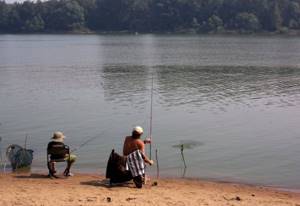
Fishing and recreation
The specificity of the Ozerninsky Reservoir is that there is a gradual discharge of water throughout the year. Therefore, depending on the season, different types of fish bite, and the same place can have different depths in spring and autumn. Naturally, this imposes certain restrictions on the choice of gear and location.
You can navigate by the bridge pilings - traces of precipitation are clearly visible on them. The main species found here are:
- pike,
- roach,
- zander,
- carp.
In addition to these species, there are also quite a lot of other fish. For example, you can often find:
- bream,
- crucian carp,
- perch,
- carp
Sometimes you come across unusual species, such as carp and trout. This is not surprising; in the 90s of the last century, fishing actively developed in the Ozerninsky Reservoir, the reservoir was stocked with rare species of fish and was used for fishing competitions. Remnants of those launches can still be found today. Because of this, fishing on the Ozerna Reservoir is limited - you cannot use imported live bait to catch predators, only those that were caught locally.
About winter fishing
During the cold season, when fishing with girders, problems sometimes arise due to the large number of wooden barriers in some coastal corners. The fish often fails. Ideal for winter fishing are areas in the already mentioned Remyanitsa, such as multi-stage edges and snags. Winter is characterized by a rich catch of asp and large bream, and autumn - of large carp and pike perch.
So, here is an approximate list of species that can be caught in Ozernenskoye in winter:
- pike, perch, pike perch,
- asp, chub, carp,
- carp, eel, bream,
- roach and something else.
What kind of fish is caught in the Ozerninsky Reservoir?

In the Ozerninsky Reservoir it is possible to catch the following fish:
- Pike.
- Perch.
- Pike perch.
- Eel.
- Bream.
- Roach.
- Bleak.
- Carp.
- Carp.
- Chub.
- Asp.
The reservoir is regularly stocked with fish, and fish inspectors and other services strictly monitor compliance with fishing rules. In this regard, there is practically no unauthorized fishing by poachers in the reservoir.
Another holiday at the reservoir
Vacations at the Ozerninskoye Reservoir are rarely of a family nature. It cannot be said that there is a developed infrastructure for recreation with wives and children. Entertaining activities include regular competitions between athletes and amateurs. There is a boat station.
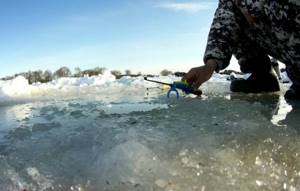
Ozerninskoe is not a paid fish farm, although from time to time incidents occur when a couple of people of dubious origin ride around on a boat, declare that a fee is required and that tickets must be bought, and threaten to break fishing rods.
However, it should be noted that control by the relevant authorities is carried out regularly, that is, cases of poaching are excluded. There are certain rules regarding fishing methods and techniques that are strictly followed. For example, the use of gasoline engines on boats is prohibited. Only electric motors or oars are allowed. Poaching methods of fishing are also prohibited.
The types of gear that can be used on the Ozernenskoye Reservoir are a float rod, spinning rod, donka, mugs and girdles.
Description of the reservoir
Since the Ozerninskoe reservoir was built on the basis of a river, the structure of the bottom is specific. Along the entire length of the reservoir, it is divided into three parts:
- Coastal zone. Before the water level rose, these were the banks of the river, mostly covered with bushes and willow growth. A lot of time has passed since the reservoir was filled, but the bottom is quite dirty and contains a lot of debris.
- Middle part. The former river bed, which has practically not lost its shape. The depth varies between 6-10 meters.
- Rapids. A former rapids that did not swim with time. The depth reaches 15 meters and is clean along almost the entire length, without debris or snags.
It is worth noting that the coastal zone is rich in local holes, ravines and spits. This is due to human activity on the former banks of the river before the reservoir was filled. Therefore, here you can find a depth difference of up to three meters at a distance of 3-5 steps.
In the first zone, perch and small pike are most often caught. But in the summer, when the reservoir warms up well and the predator comes out to soak up the sun, worthy specimens come across. The central zone is rich in pike and carp , and in the dumps you can try to catch bream.
How to get there (get there)?
Several buses will help you get to Novovolkovo - these are routes No. 30, 37, 50, 450. They run in the direction of Ruza, Moscow, Pokrovsky and Rumyantsev.
By car from Moscow, getting to the Ozerninskoye Reservoir on your own is easy:
Note to tourists
- Address: Ruzsky district, Moscow region, Russia.
- GPS coordinates: 55.765067, 36.195748.
Strict adherence to the rules of fishing and behavior lead to the preservation of species diversity and fish populations in Ozerninsky and, accordingly, to increased interest from the population. Well, this place is really great for fishing. If you manage to visit here, write in the comment field about the results - we are sure that our readers will be interested in your responses and reviews, but in the meantime we offer you to watch a video description of the attraction, enjoy watching!
Features of fishing on the Ozerninsky reservoir
The Ozerninskoye Reservoir is a unique natural site on the territory of the Russian Federation, which is one of the most visited reservoirs in the Moscow region. In its depths there are various types of peaceful and predatory fish. Moreover, many of them are well caught almost all year round. Fishing on the Ozerninsky reservoir is always accompanied by unforgettable emotions, excitement and good impressions.
The reservoir on the Ozerna River is a young artificial reservoir that stretches for 29 km along the dammed bed of the river of the same name, flowing from Lake Trostenskoye. Due to the distance from Moscow (100 km) and the presence of pristine nature, this site is considered a real find for fans of green tourism and active recreation, including fishing.
Pike, perch, pike perch, eel, bream, roach, carp, bleak and carp are found here . Less often you can find asp or chub here. The population growth is due to favorable climatic conditions, as well as the active work of fisheries authorities, which prevent illegal fishing and poaching. In addition, the reservoir is constantly stocked with fish from local fisheries.
Like many other artificial reservoirs, the Ozerninskoye Reservoir is characterized by a gradual release of water, which begins in the spring and continues until late autumn. At the beginning of the 2000s, the water level dropped by two and a half meters. Annual discharges have caused the rapid growth of willow growth, while reeds and reeds are practically absent here.
When studying the map of the Ozerna River, it is necessary to take into account possible inaccuracies associated with changes in water levels depending on the season. This feature is typical for areas with depths from one and a half to two meters. To determine the drop in level, it is enough to find a whitish coating on the supports of bridges and other structures.
The width of the channel does not exceed 10-12 meters, and in the Remyannitsa area the depth reaches 6-10 meters. The deepest points are present in Old Volkovo. As for the flooded channels, they contain a lot of silt and a low concentration of fish. 2-3 meters above the riverbed there is a stretch of former floodplain.
Reach often covers vast areas of water, coming very close to coastal areas.
You can meet predatory fish not only on steep edges with a contrasting depth difference, but also on flooded floodplains, where there are traces of human activity, mounds, holes and other bottom anomalies.
In some places on the edge there are flooded ravines or spits that smoothly fall onto the reach. In coastal areas, depths do not exceed 2-4 meters, and the concentration of vegetation is maximum. As for the bottom, it can be soft, heavily silted, or hard rocky.
In coastal waters, the predator striped perch is often found, as well as small “grass” pike. In the summer, when predatory fish leave the deep areas, you can find trophy prey here, which comes out into shallow water to bask in the sun. In places where the forest comes close to the shore, there are often submerged stumps, which provide good shelter for the inhabitants of the depths.
When examining a reservoir with an echo sounder, you can identify the flooded remains of bridges, wooden structures and other traces of human activity. Among the most promising spots for fishing on the Ozerninskoye Reservoir are the areas near the upper reaches, as well as two settlements in the middle part - Old Volkovo and the area around the village of Khotebtsovo.
Fans of spinning fishing or clubs should pay attention to the Remyannitsa fishing base, which is located in the village of the same name. Once upon a time, this settlement housed a fishery inspection center, but now reeds and willow thickets are growing in its place.
Fishermen come to this place for a simple reason - there is a lot of fish here, and besides, if you wish, you can rent a boat for a reasonable fee. By the way, this opportunity is open until late autumn, while at other bases rentals close in September.
An avid spinning fisher, as well as a lover of ice fishing, will definitely identify a lot of “fish” points in this area, which are emphasized :
- snag;
- edges with many steps;
- bumps;
- winding riverbed.
During the construction of the dam and the creation of the reservoir, many traces of human activity were submerged. Among them were fallen forest trees that were not removed and soon found themselves flooded with water.
Fishing will be especially effective when examining the edges of a deep channel, for which you should use stepped wiring and heavy jig baits. Oscillating spinners and small spinners also perform well. They are in demand for fishing in overgrown shallow waters and backwaters.
In winter, this water area attracts a large audience of fishermen who want to catch their trophy. A good bite is noticeable from the moment the ice forms until it disappears. According to reviews from local residents, the pike bites especially well when ascending the Veina River up to 1 km from the bridge. A little higher are the favorite perch points. When fishing in deep water in winter, you can choose one of four zones.
On the upper borders of the edges there are often single stumps up to one meter high, as well as snags. often accumulate in such places , including :
The weight of the latter rarely exceeds 2 kilograms in this area, although there are exceptions. The most catchy points are located at a distance of three hundred meters from the left bank. There you can successfully use circle gear, fishing the flooded floodplain with a descent of up to 5.5 meters. Moving across the water area, the tackle will be able to carefully examine the bottom horizon, where, as a rule, a trophy predator stands.
The Ozerninsky Reservoir is often home to 5-6 kg pike perch, which amaze with their size and quick bites. If you want to go spinning fishing, you should pay attention to three key points :
- The confluence of flooded rivers.
- The bends of Ozerna.
- Channel loop.
As for girder fishing, a lot of effort must be made to find the habitat of the predator. It is important for the angler to constantly change the position of the gear to determine the current route of the fish. It is important not to miss the moment of a good bite on the first ice, because with the arrival of January frosts the predator becomes inactive and shows practically no traces of its activity.
If you place yourself in the center of the circle along which the channel forms a loop, then the bait lowered into the water will move, rolling into the channel and rising back to the edge. In most cases, the bite occurs when rising.
To examine deep areas, it is advisable to use vertical spoons. At the same time, it is not necessary to install an anchor here, since this will allow you to successfully cope with snags. Another promising point is located above the cape.
Another large area, which can be reached from the Remyannitsy boat station, is located on the right side of the reach. It can be determined by the presence of a line of high-voltage wires that cross the body of water. The flooded Ozerna riverbed with a pronounced bottom and contrasting topography flows throughout the entire territory of this zone.
Trophy pike perch can be found in June or late October, when it begins to form large schools and intensively search for food. But unfortunately, recently large specimens have become less and less common, so the average size is 1-1.5 kg.
Tips for successful fishing
According to fishermen’s reviews, the following types of gear can be used when fishing on the Ozerinsky Reservoir:
- fishing rods,
- spinning rods
- mugs.
Experienced fishermen distinguish the following three fishing zones in this reservoir:
- near the coast. Here you can catch crucian carp and pike. It is best to use a fishing rod as tackle, and use a worm or special store-bought cereal as bait.
- as you approach the center. Pike perch, carp and asp are caught in this place. This fish is caught using flour; a spinning rod is suitable as a tackle. According to fishermen, there are quite large pike perch here – five to six kilograms each.
- in the middle of the reservoir. Fishermen catch chubs and large bream here. Experienced fishermen recommend worms or porridge as bait, and spinning rods as tackle, because some fish are quite large and cannot be held with a regular fishing rod.
- When fishing on the Ozerninsky Reservoir, it is prohibited to use various devices used to kill fish. Violation of these rules will result in a fairly large fine.
- You can fish in this reservoir with a rowing boat or from a vessel equipped with an electric motor. Gasoline engines are strictly prohibited.
